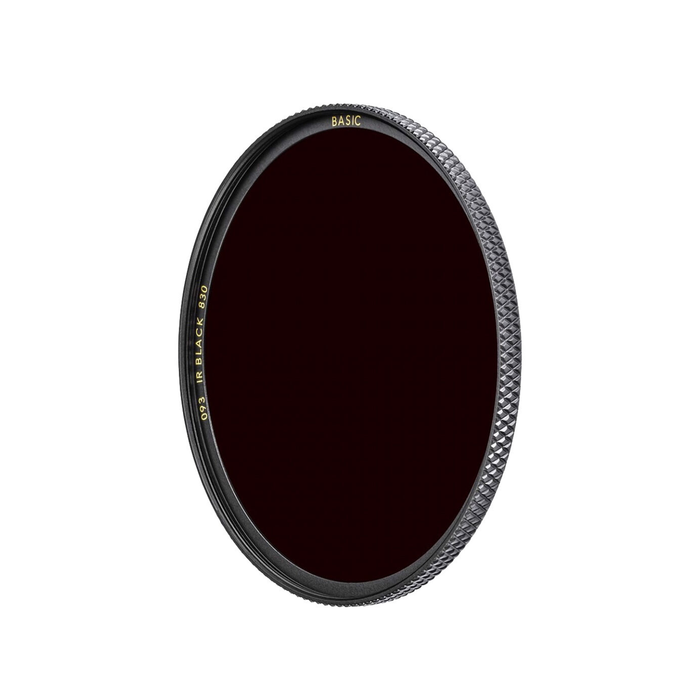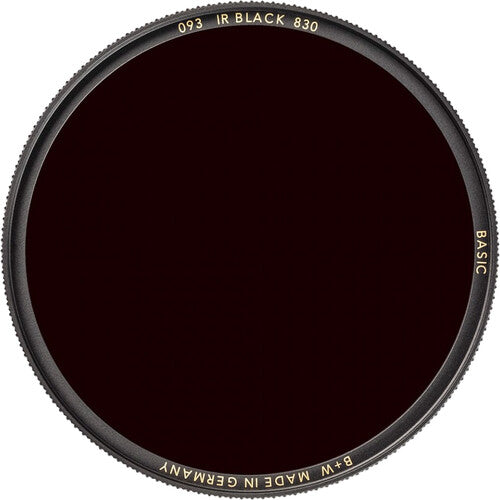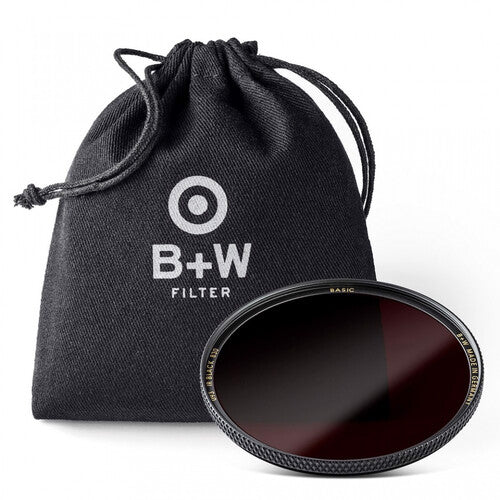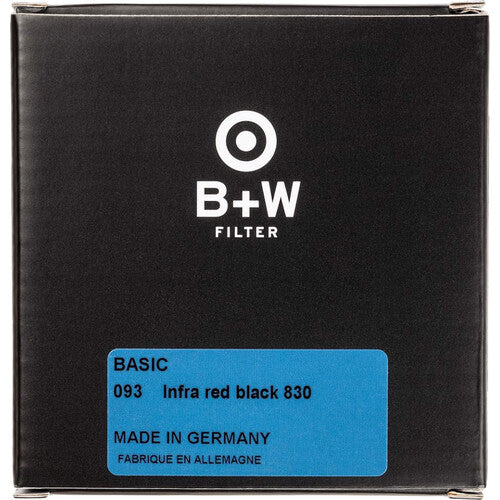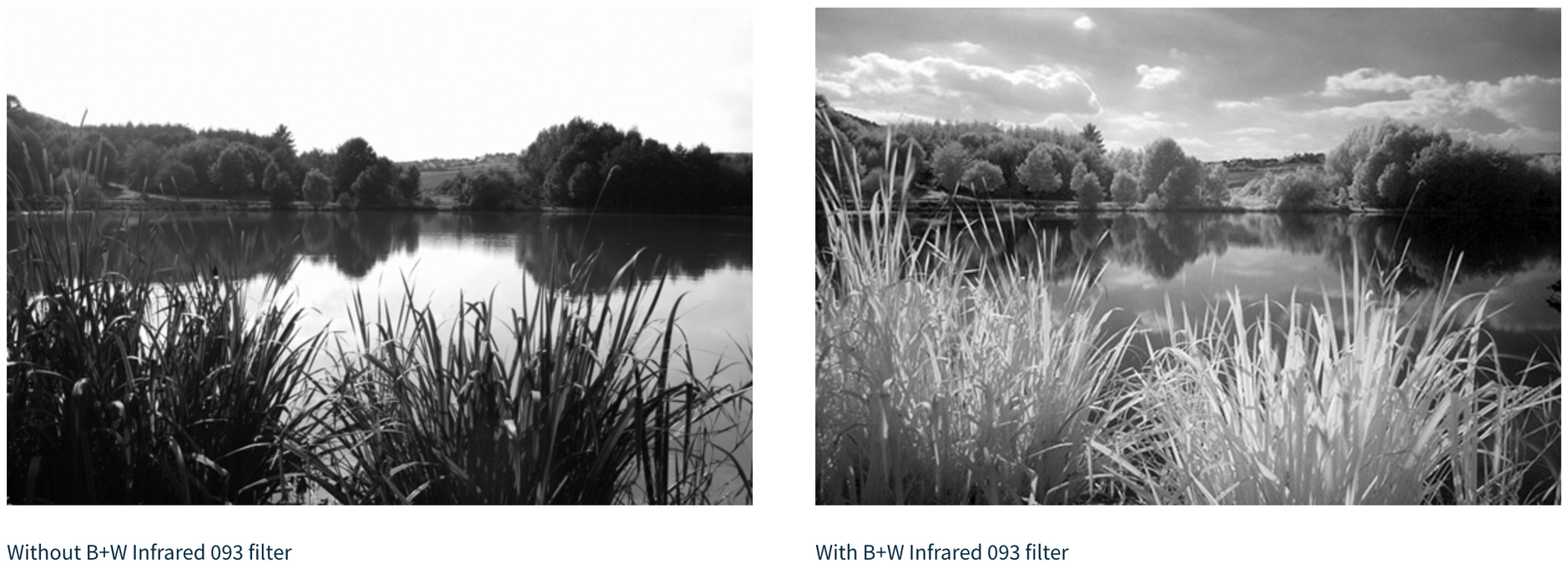The
B+W 77mm #830/093 Basic Infrared Black/Red Filter is an infrared filter that blocks the entire visible spectrum.
It therefore appears almost black and captures the pure IR range without visible red. It enables image results with extreme contrasts.
Features:
- Compatible with most digital cameras
- Can be used with Infrared-type film
- For experimental & creative photography
- Images with extremely high black-white contrast
- Green foliage is rendered as bright white
- No coating on lens
- Made in Germany
This filter makes pure infrared photographs possible without the visible red component. Its transmission only begins to exceed ¡ % at 800 nm, rising to 88 % at 900 nm, and remains that high far beyond the upper limit of sensitization covered by infrared films. This filter is used less frequently in pictorial photography because of the dramatic loss of effective ISO. But in the scientific field, materials research and forensics, the limitation to a strictly infrared range is often important. The filter factor is very dependent on the illumination and on the characteristics of the film.
Infrared photographs are attractive in many ways: Because of the nearly white reproduction of the chlorophyll green of vegetation, infrared black-and-white photographs render landscapes as if they were self illuminating, or immersed in an extraterrestrial light (the moonlight effect). Infrared color photographs have a fairy-tale effect because colors are reversed. The film renders highly infraredreflecting plants in orange to purple-red tones, while filters suppress the blue and green components that are also present. In any case, the pictorial results are difficult to predict, therefore they are always good for experimentation and surprises.
Because there are no exposure meters that are sensitive exclusively to the sensitivity range of these infrared films, it is difficult to calculate exact exposures and conversions by means of filter factors. This is due to the fact that two subjects that are equally bright in normal (visible) light might reflect infrared radiation at significantly different rates. In other words, they can have very different “brightnesses” as far as the infrared film is concerned. Therefore it is always advisable to make a series of three to five different exposures.
Tips:
- The IR-effect occurs in bright light only
- Define focus first, then screw on the filter
- Consider IR-engraving on the lens (if existent)
- Select small stop
- Determine right exposure time with test series
- Use tripod due to long exposure times
Please Note:
- Because of the underexposure that would occur when using a manual exposure camera, an increase in exposure by at least one aperture stop is recommended, plus automatic tonal value correction in post production.
- Check the IR-suitability of your camera.
- IR-photographs need to be edited with a post processing application: Convert the photograph into black-white mode and use the automatic contrast or - to obtain an even better result - increase the contrast by using the histogram.
-
Infrared photography is not a substitute for a thermal imaging camera. The pictorial infrared photography described above is often confused with thermal photography. This also forms images from infrared radiation, but in a much higher range (from about 10,000 nm and above)
